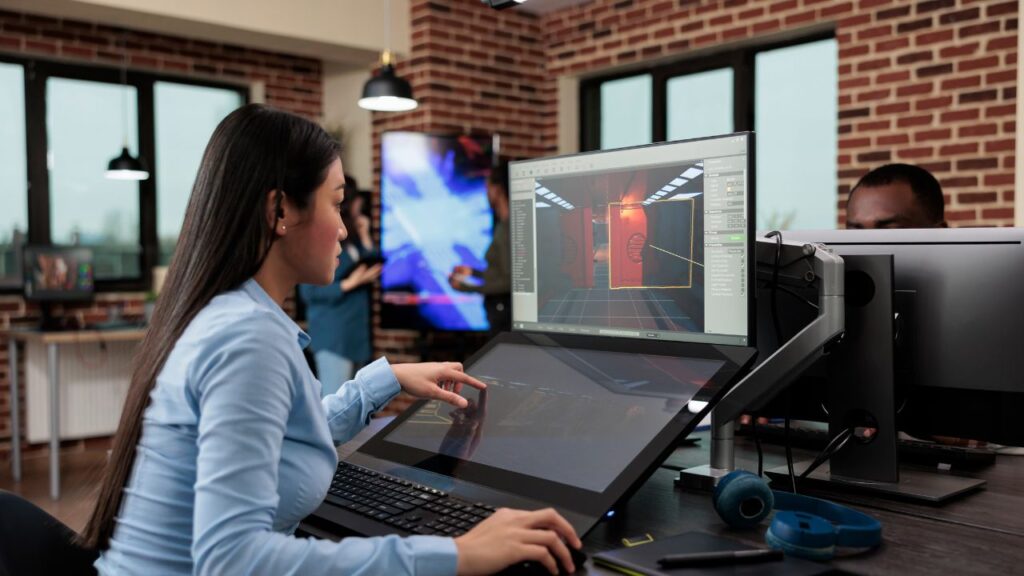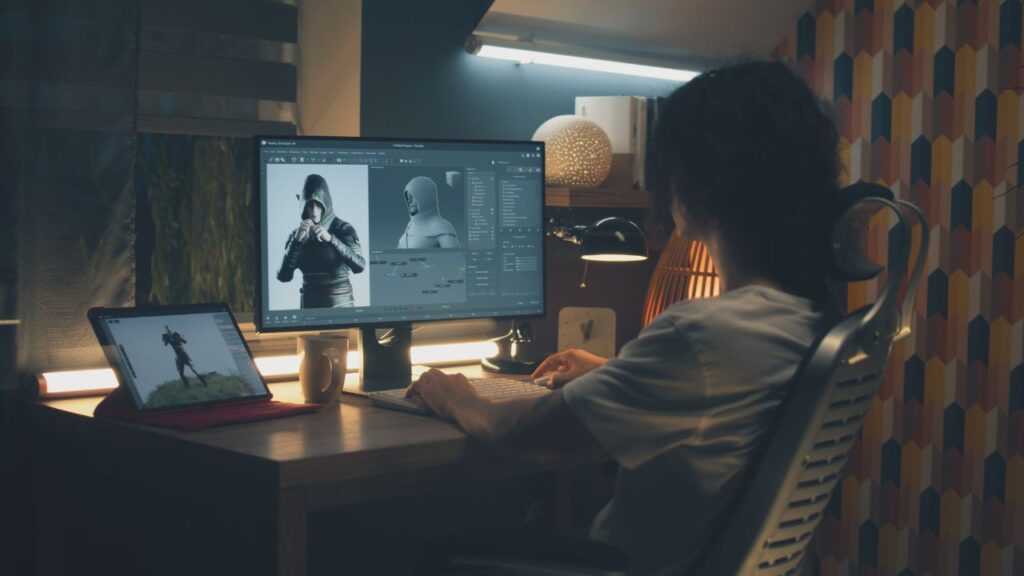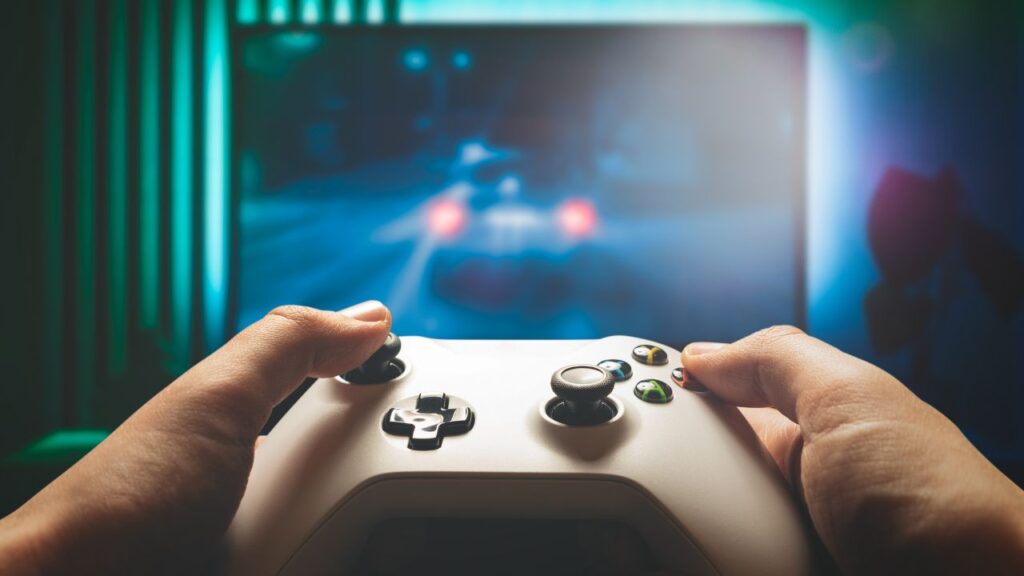Creating a game can feel overwhelming when ideas are scattered across notebooks, documents, and your head. Many developers start with big dreams but struggle to organize their thoughts into something clear and actionable. Without a proper plan, game projects often spiral into chaos or never get finished at all.
A game design document template provides a structured framework that transforms messy ideas into organized plans, helping developers stay focused and communicate their vision clearly. This document serves as the blueprint for your entire game project. It keeps everyone on the same team working toward the same goals.
The right template can save weeks of planning time and prevent costly mistakes later in development. Whether you’re working alone or with a team, having the core elements mapped out from the start makes the whole process smoother. Understanding what sections to include and how to structure them properly can make the difference between a finished game and another abandoned project.
What Should Every Game Design Document Include?
A solid game design document template needs four main parts to work well. These core elements help developers stay organized and make sure everyone on the team knows what they’re building.
Game Overview
The game overview section gives readers a quick snapshot of what the game is about. This part should be short but pack in all the key details.
Start with a one sentence summary that explains the game in simple terms. For example: “A puzzle platformer where players control a robot cat collecting batteries in a space station.”
The overview needs to cover the target audience and platform details. List who will play the game and what devices it will run on. Include the expected age range and skill level.
Genre and core mechanics belong here too. State clearly what type of game it is. Mention the main things players will do.
Add a brief section about game goals and win conditions. Players need to know what they’re trying to achieve. Keep this part simple and direct.
The overview should fit on one page. If it gets longer, cut out details that belong in other sections. This section works like an elevator pitch for the entire project.
Gameplay Mechanics
This section breaks down how the game actually works. It covers the rules, systems, and player actions that make the game fun.
Player controls come first. List every button, key, or touch gesture players will use. Show what happens when they press each control. Use simple language like “spacebar makes the character jump.”
Core game systems need detailed explanations. These include things like health, scoring, inventory, or resource management. Explain how each system works and connects to others.
Level progression shows how the game gets harder or changes over time. Describe how new challenges appear. Include details about unlocking new areas or abilities.
Victory and failure conditions tell players when they win or lose. Be specific about what triggers these outcomes. Include any penalties or rewards that happen.
Use numbered lists to show step by step processes. This makes complex mechanics easier to understand. Bold important terms that appear throughout the document.
Story and Narrative
The story section explains the game’s plot, characters, and world. Not every game needs a deep story, but most benefit from some narrative elements.
Character descriptions introduce the main people or creatures in the game. Include their goals, personality traits, and special abilities. Keep each description to 2-3 sentences.
Setting and world building paint a picture of where the game takes place. Describe the time period, location, and mood. Include important background details that affect gameplay.
Plot structure outlines the main story beats. List the key events that happen as players progress. Show how the story connects to different levels or areas.
Dialogue and text guidelines keep the writing consistent. Set rules for how characters speak. Include examples of the tone and style to use.
Some games have multiple story paths or endings. Map out how player choices affect the narrative. Show which decisions lead to different outcomes.
Visual Style and Art Direction
This section guides how the game looks and feels. It helps artists create consistent visuals that match the game’s mood and theme.
Art style sets the overall visual approach. Choose terms like “cartoon,” “realistic,” “pixel art,” or “minimalist.” Include reference images or examples from other games.
Color palette lists the main colors used throughout the game. Pick 5-8 colors that work well together. Explain what mood each color should create.
Character design guidelines ensure all characters fit the same world. Set rules for proportions, clothing styles, and facial features. Include examples of good and bad designs.
Environment art covers backgrounds, levels, and objects. Describe the look of different areas in the game. Include details about lighting, textures, and props.
UI design explains how menus, buttons, and interface elements should look. Keep these designs simple and easy to read. Make sure they match the game’s overall style.
What Extra Parts Make Your Game Design Document Complete?
A complete game design document needs more than just basic gameplay ideas. Technical details, audio planning, and user interface design help developers build games that work well and feel polished.
How Do You Handle Technical Specifications?
Technical specifications tell programmers what tools and systems they need to build the game. These details help the team understand if their ideas will actually work.
Platform requirements list which devices will run the game. This includes computers, phones, or game consoles. Each platform has different limits for memory and processing power.
Performance targets set goals for how smooth the game should run. Most games aim for 60 frames per second on their main platform. Lower frame rates can make games feel choppy or slow.
Engine choice affects everything about development. Popular engines like Unity or Unreal Engine have different strengths. Some work better for 2D games while others handle 3D graphics more easily.
Memory limits keep file sizes reasonable. Mobile games often need smaller files than computer games. Art and sound files take up the most space in most games.
What Should You Plan for Sound and Music Design?
Audio design creates the mood and feedback that makes games feel alive. Good sound planning helps composers and sound designers know what to create.
Music style sets the emotional tone for different parts of the game. Action scenes might need fast music while puzzle areas work better with calm sounds. Each game level or area should have its own audio personality.
Sound effects list covers every noise the game needs. This includes footsteps, button clicks, explosions, and victory sounds. Even small sounds like menu beeps help players understand what is happening.
Audio file formats depend on the game platform. Some devices play certain sound types better than others. File size limits keep games from becoming too large to download or install.
Voice acting needs require planning for recording sessions. This includes character voices, narration, and any spoken tutorials. Scripts and character descriptions help voice actors understand their roles.
How Do You Design User Interface and Experience?
User interface design helps players interact with the game easily. Good planning prevents confusion and makes games more enjoyable to play.
Menu layouts show how players navigate through game options. Main menus, pause screens, and settings pages all need clear organization. Button placement should feel natural and easy to reach.
Control schemes explain how players move characters and interact with the game world. Different platforms need different control methods. Touch screens work differently than keyboards or game controllers.
Accessibility features help more people enjoy the game. This includes options for colorblind players, hearing assistance, and motor skill accommodations. Simple changes can make games playable for many more people.
User flow diagrams map out how players move through different game screens. These show the path from starting the game to playing levels to checking scores.



